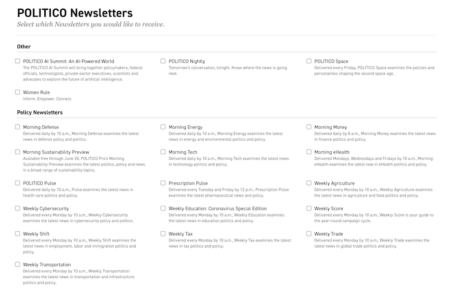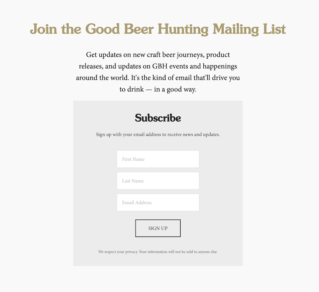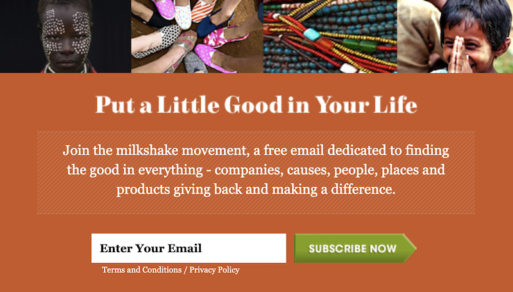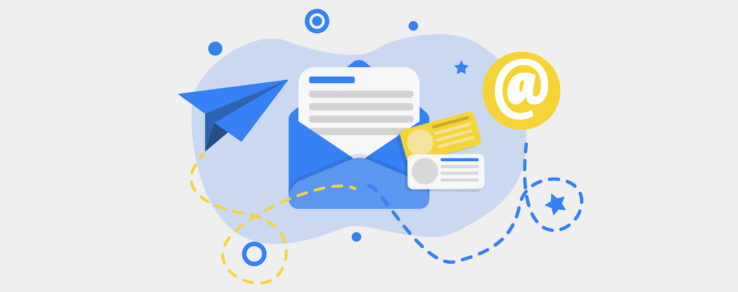Newsletters: we read them, we write them, we live them. What started out as society publications (think Lady Whistledown’s Society Papers from Netflix’s “Bridgerton”), quickly turned into print newspapers. Then, as the digital age began, print publications turned to email and the eNewsletter was born.
Today, we can find eNewsletters for nearly any topic of interest.
Politics? Check — POLITICO Playbook.

Beer? Check — Good Beer Hunting.

Positivity? Check — Milkshake.

Funny thing is, these are just single examples for each of these topics. There are thousands of eNewsletters for every topic imaginable. Do a quick search on Google and you’ll be overwhelmed with what to read in a matter of minutes.
But just because it seems like everyone is doing a newsletter doesn’t mean everyone is doing it well. Whether inside the energy utility industry or outside of it, here are five common eNewsletter mistakes you don’t want to make.
1. Putting Important Content Last
What is the purpose of an eNewsletter? According to Brafton, an eNewsletter is used “to share relevant and valuable information with a network of customers, prospects and subscribers…allowing you to share engaging content, promote sales and drive traffic to your website.”
With this definition in mind, it simply makes no sense to put important content last. According to Chartbeat, 35% of desktop users leave a page without scrolling down at all and the most viewed area of the page is just above the fold (typical height of a browser window) with 80% of viewership.
Today’s consumers don’t always have time or aren’t engaged enough to read a full newsletter, so put the most important takeaways at the top, whether encouraging your energy utility’s customers to watch the latest video in a popular series or educating them about new energy efficiency rebates.
2. No Call-to-Action
Newsletters are a great opportunity to encourage readers to take action after reading. A clear CTA gives readers direction for what to do during or after reading your content. Without a specific CTA, customer engagement ends before it really began. They act as a tool to increase program conversions or enrollments and without one this isn’t possible — it may even persuade customers to reevaluate why they subscribe, potentially leading to increased opt-out rates.
For energy utilities, a CTA could guide customers to your latest programs, incentives or rebates. You can include a CTA within the copy or at the beginning or end (or both) of the newsletter. This gives readers multiple opportunities to click through to more content or resources. For some tips to create CTAs that lead to conversions, Campaign Monitor suggests:
- Using actionable language
- Making the CTA easily identifiable
- Keeping CTAs short, while still showcasing the required action
- Changing the point of view to address readers
- Creating a sense of urgency
3. Including Overly Promotional Material
While newsletters offer a valuable opportunity to promote services and programs, there is a thin line between sharing helpful resources and marketing your energy utility too much. Remember: Customers subscribe to newsletters for valuable content that will help make their lives better in some way. They expect content that meets their interests and needs. Promotional material puts focus on your energy utility rather than the customer.
When reviewing your eNewsletter, ensure you do so from a customer’s perspective. Answer these three questions:
- Does this content help my customers solve a problem?
- Is the content focused on the customers’ needs or my utilities’ goals?
- What value is this eNewsletter providing to my customers?
If you can answer these questions and assess that the content is customer-centric then move forward to hit the send button!
4. Trying to Reach Everyone
We already know customer segmentation is one of the smartest marketing tactics for any industry. According to Campaign Monitor, 56% of people unsubscribe from emails due to content that’s no longer relevant to them. For eNewsletters, it’s imperative your energy utility understands that your customers have different needs.
Business customers versus residential customers, homeowners versus renters — each audience is unique. Decide how many segments makes sense for your energy utility based on your customers’ interests and create personalized eNewsletters for those audiences.
Consider going further to segment your business customers into separate industries. When Questline Digital did this for AEP Ohio, the energy utility saw an engagement increase of 84% for their healthcare sector. In addition, engagement for their education and manufacturing segments increased by 54% and 43%, respectively.
Yes, you could reach all of your energy utility’s customers with a single newsletter, but it won’t serve your energy utility well. Segment content based on your customers’ wants and needs to see higher engagement and satisfaction.
5. Boring Subject Lines
How many emails do you receive a day that you simply discard based on subject line alone? Probably a lot. In fact, Invesp says that a staggering 69% of email recipients report email as spam based solely on the subject line. Don’t let this happen to your energy utility. Invest time into the best practices that make a subject line stand out. For starters:
- Be descriptive
- Keep them short
- Limit punctuation
- Consider your message
The last bullet is especially important — what you want your energy utility’s customers to know will drive the direction for the subject line. Most importantly, craft a subject line that would make you stop scrolling and open the email.
BONUS: Not Optimizing for Mobile or Dark Mode
Finally, make sure your energy utility’s eNewsletters are optimized for both mobile viewing and dark mode. Mobile should be a given — most emails are now read on smartphones — but as customers continue to spend more time looking at screens, dark mode has become increasingly important. In order to encourage more engagement and longer reading times on your eNewsletter, it’s important to consider these two factors in the design process.
Newsletters are Here to Stay
Newsletters are a popular, and important, way to engage with customers. By creating content that speaks to what they value, your energy utility is showing that you both listen and care about your customers. Continue to be a trusted resource for them by sharing newsletters full of helpful tips, insights and solutions. And don’t make the mistake of making these mistakes.

